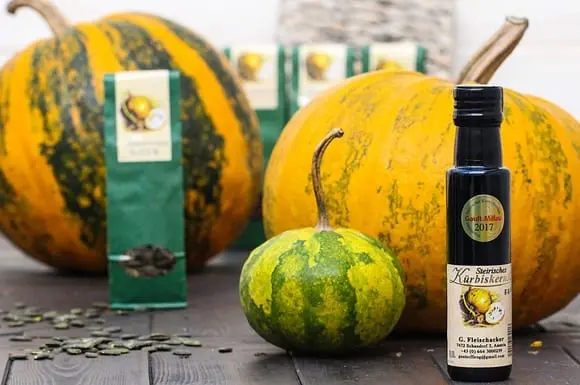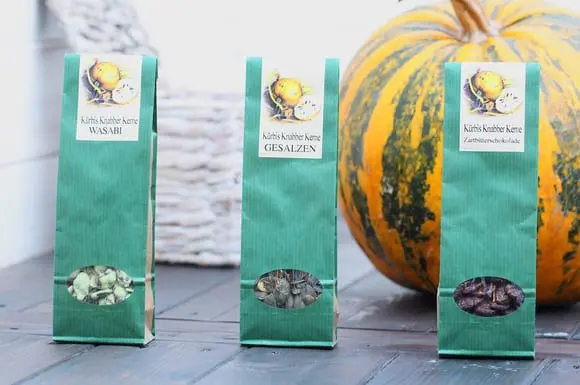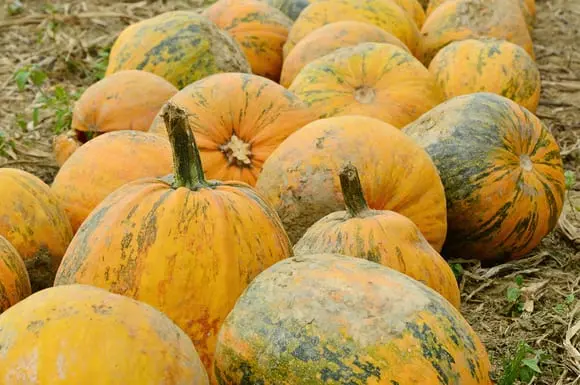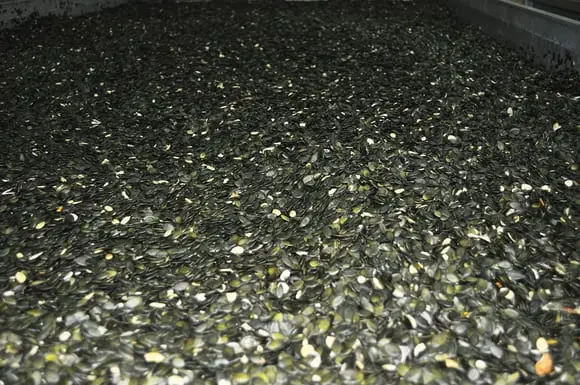Contents
Attractions are different: natural, historical, cultural, and entertainment. A special category consists of gastronomic attractions. Sometimes they contain the centuries-old traditions of an entire nation and can tell more than any guidebook. We offer you to get acquainted with one of these attractions more closely. And to do this, we will take a trip to an amazing corner of the planet — the picturesque region of Styria, in the south-east of Austria.
Seeds — pure emerald


Styria is called the green heart of Austria, and there are many reasons for this. One of them is fertile soils, an abundance of greenery and countless sunny days a year. The ideal climatic conditions from time immemorial allowed to cultivate a variety of agricultural crops in this region. So, for many centuries, generous harvests of pumpkins have been regularly collected here. Thanks to this, local farmers eventually managed to establish the production of pumpkin seed oil. By the end of the XIX century, they even managed to bring out a unique variety — Styrian pumpkin with seeds without a peel. Soon it became the hallmark of the region and became famous throughout the country.
It is these selected seeds with unsurpassed properties that give Styrian oil a captivating aroma, a unique deep taste and a signature dark green color with a reddish tinge. Gourmets call it green gold and appreciate it extremely highly. Today, Styrian oil is available to a wide consumer, including in our country. In just a few clicks, you can order it in the GreenBrands online store and in the Olivis store network, in order to soon try out all the advantages of this product.
How does gold get into the bottle



Today, the hereditary Austrian farmer Gunter Fleischacker, who successfully continues the family business, is engaged in the production of Styrian oil. At first, a rich harvest of pumpkins ripens on vast lands. Then the seeds are carefully extracted from the fruit, completely cleaned of the pulp, washed and dried. Only then they are sent to production, where with the help of presses they are obtained from 100 % natural Styrian pumpkin seed oil. On average, it takes from 2.5 to 3 kg of selected pumpkin seeds to get 1 liter of oil.
The finished product is bottled in dark glass bottles with a corporate logo. Strict quality control is carried out at every stage of the entire cycle “from the field to the counter”. The evidence of this is the marking “g. g. A” on the lid or label. It guarantees the authenticity of the origin of Styrian seeds and the natural composition of the ingredients of pumpkin oil. An additional quality guarantee is provided by various certificates, including the Vegan certificate, which confirms that the Styrian oil produced by farmer Gunther Fleischacker contains exclusively natural components of plant origin.
We taste Styria
Warm salad with lentils and pumpkin
The best way to evaluate the taste qualities of Styrian oil is to help the dishes prepared from it. For the autumn menu, a warm salad with lentils and pumpkin is optimal.
Wash 75 g of lentils, boil until completely softened in slightly salted water with the addition of bay leaf, a pinch of thyme, cloves and dried parsley. Bake 200 g of pumpkin pulp and cut it into small slices. Towards the end of cooking, cut into slices a small carrot, 2 stalks of celery, a stalk of leek. Heat 1 tbsp of vegetable oil in a frying pan, fry the crushed garlic clove for a minute. Then we pass the carrots, celery and leeks in garlic oil. It remains to combine the passer with boiled lentils and pumpkin, add salt and pepper to taste, season abundantly with Styrian pumpkin seed oil produced by G. Fleiaschacker. For a brighter aroma and taste, you can add finely chopped fresh herbs to the salad.
Pumpkin soup in Styrian
The family menu will be organically complemented by the signature Styrian pumpkin soup. First, chop the medium onion into a cube and fry it in a saucepan with vegetable oil until transparent. We cut 500 g of pumpkin into slices, pour it out to the passer and fry it until it turns brown. Then pour in a little hot water so that it barely covers the orange slices. Add 1-2 cloves of garlic, passed through a press, salt, black pepper and ground cumin to taste. You can put any dried herbs here. Add another 500 ml of hot water, bring the soup to readiness and puree with an immersion blender.
Before serving, be sure to pour 1-2 tablespoons of Styrian oil directly into the soup plate. This touch will give the dish a subtle pumpkin flavor and a more versatile refined taste. Garnish the soup with fried pumpkin seeds and parsley petals. Homemade rye bread crackers will also be in place.
Pumpkin cupcake
Styrian butter is ideal for making homemade cakes, such as pumpkin cupcake. In a deep container, combine 240 g of flour, 1 tsp of baking powder, 90 g of sugar and 0.5 tsp of salt. Separately, beat the egg, 50 ml of Styrian butter and 125 ml of milk until a homogeneous consistency. Pour the mixture into the flour base and use a mixer to knead a smooth dough. If you want to get a vegetarian variation, replace the milk with 200 g of pumpkin puree.
Last of all, we mix a handful of pumpkin seeds into the dough. Instead, you can put pieces of fresh or dried fruit, your favorite berries or nuts. We lubricate the cake pan with vegetable oil, fill it with about two-thirds of the dough and send it to the oven at 180 °C for 20 minutes. The finished cake can be covered with chocolate icing on top.
If you really care about the health of your loved ones and focus on natural products in the diet, the Styrian oil produced by G. Fleiaschacker is created especially for him. It is made according to traditional technology from Styrian pumpkin seeds, unique in taste and nutritional qualities. This product will transform your favorite dishes, make your everyday menu really useful, interesting and diverse.









